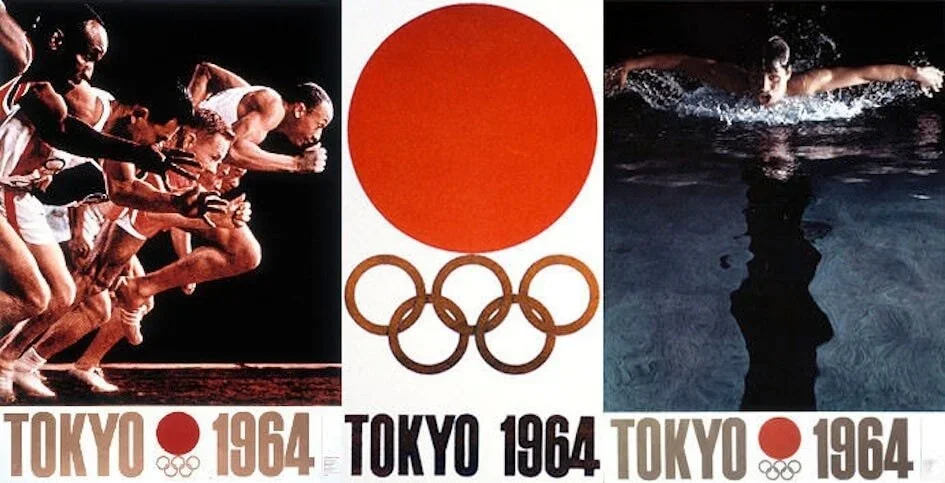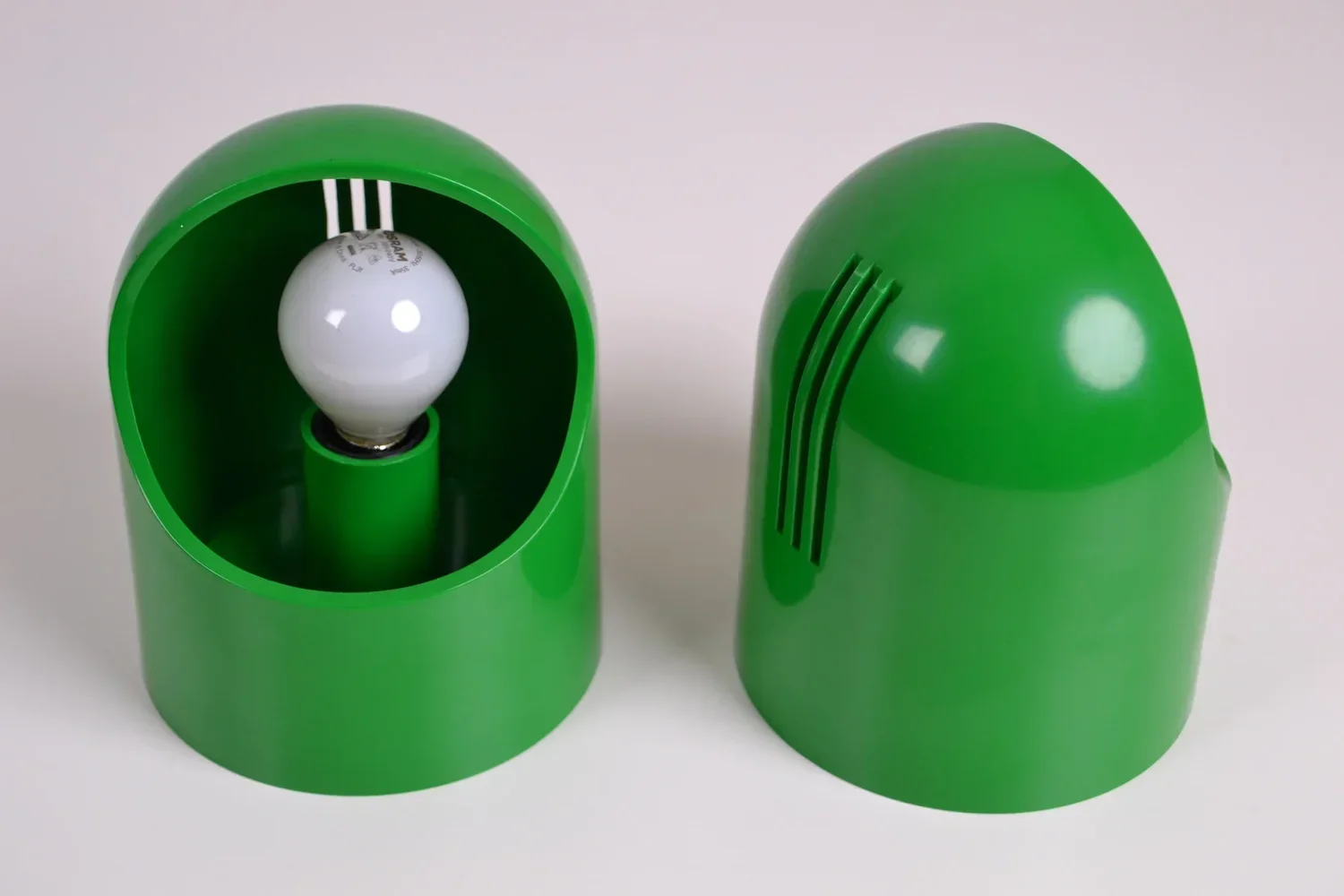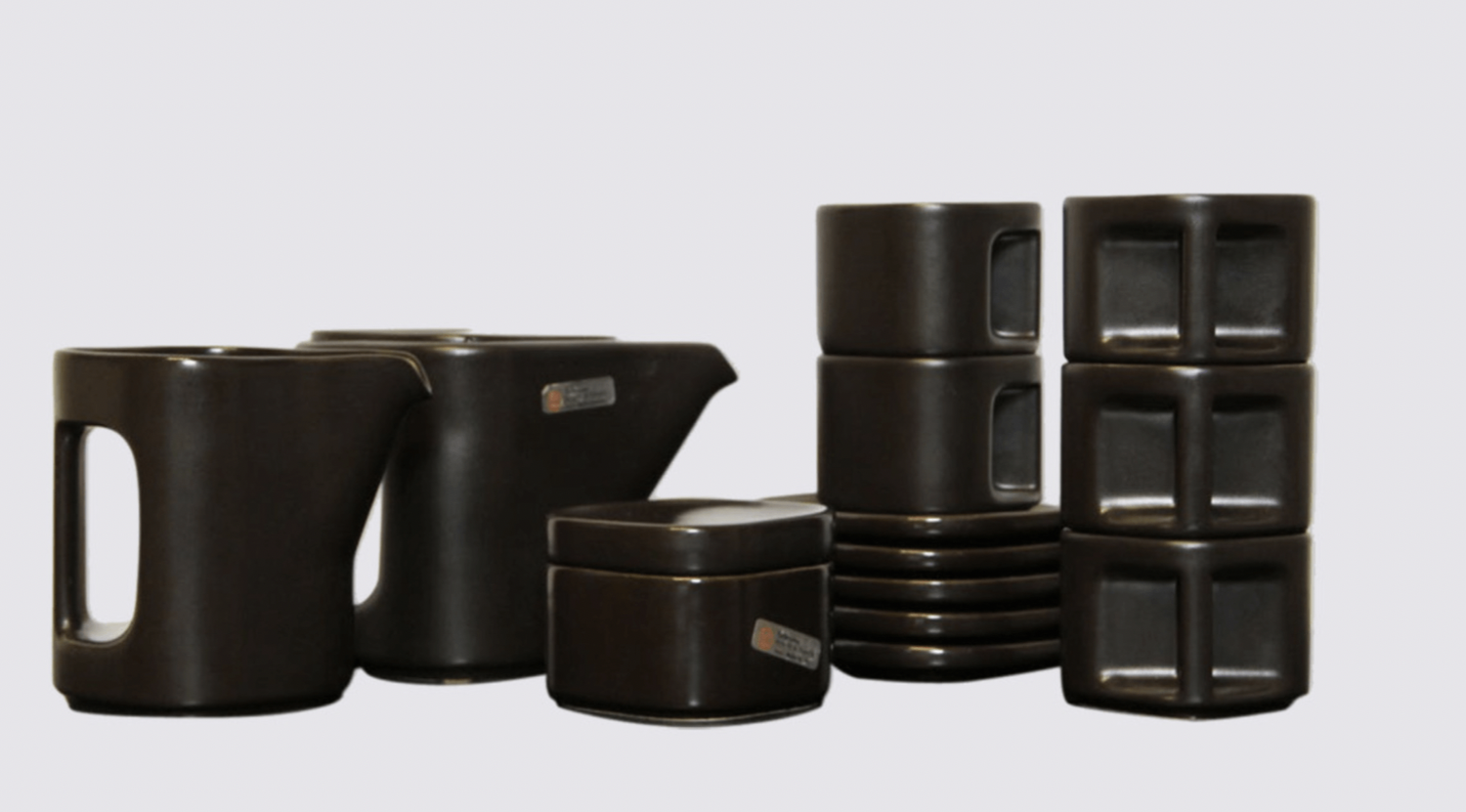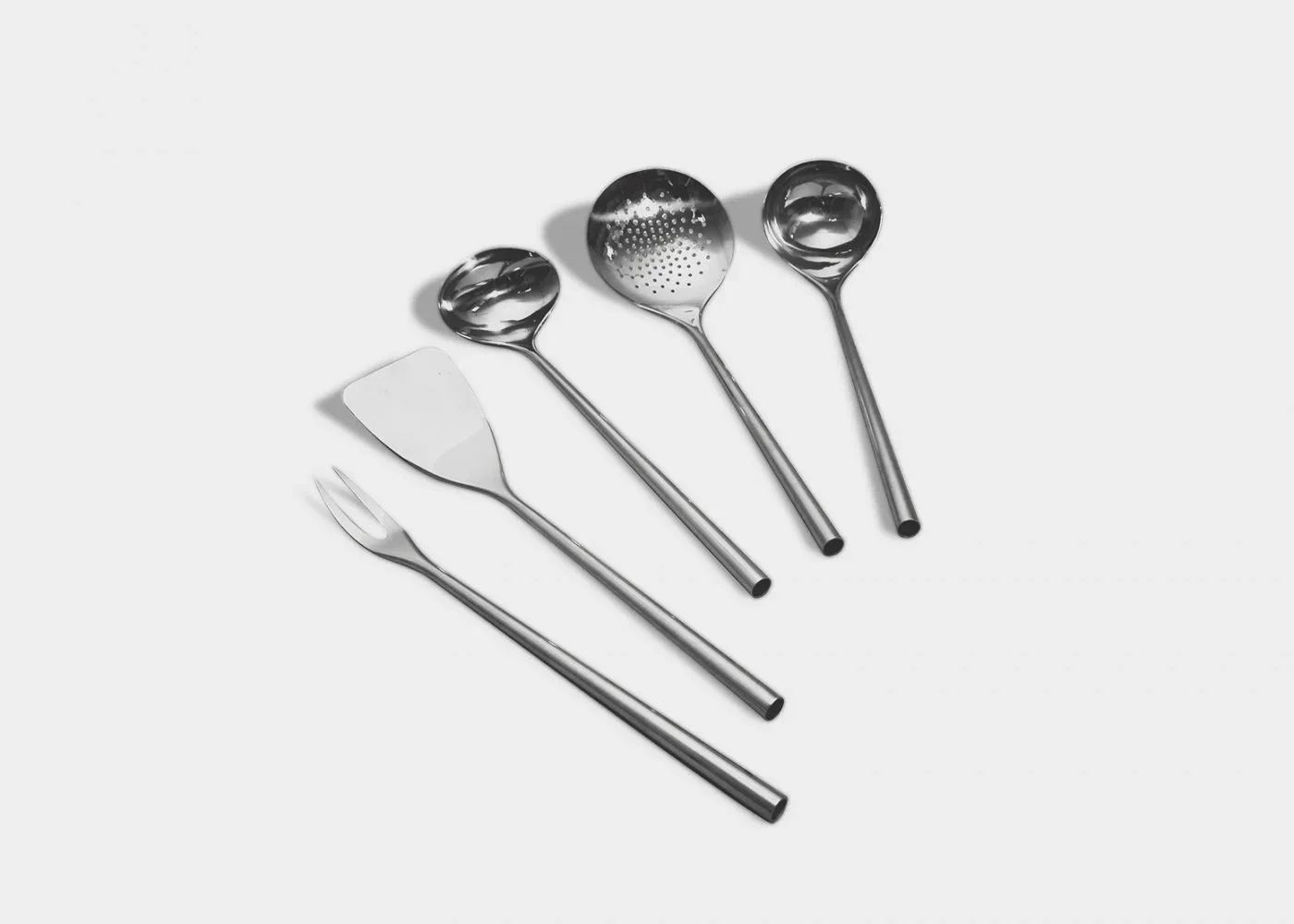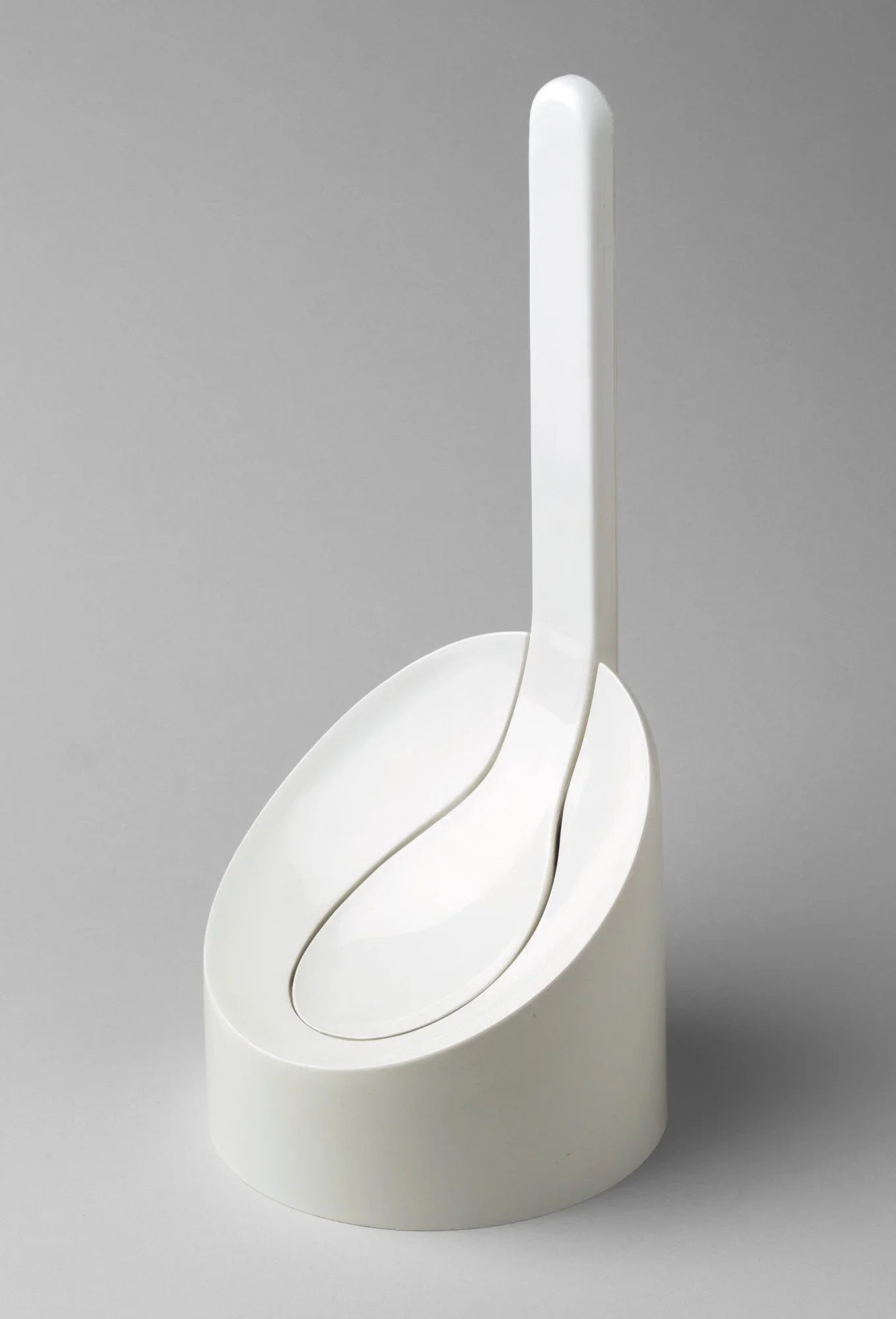MAKIO HASUIKE
1926 - 2011
GIOTTO STOPPINO
In 1963, Hasuike moved to Italy, a decision that significantly influenced his career trajectory. He founded his studio in Milan in 1968, making it one of the first industrial design studios in the country. The establishment of MH Way in 1982 further cemented his reputation as an innovator. This company was an experimental venture introducing a series of groundbreaking products, ranging from technological tools to stylish office accessories.
The iconic toilet brush born from the genius of Japanese designer Makio Hasuike in 1974. Characterized by a concave and angled shape, designed to maximize both functionality and aesthetics, Gedy's Cucciolo has revolutionized the concept of household objects. The collaboration between Gedy and Makio Hasuike, represented by the legendary Cucciolo, has marked an indelible chapter in the history of Italian design.
Fifty years after its revolutionary debut, Cucciolo continues to embody a perfect balance of form and function, reaffirming its relevance in the contemporary design landscape. Cucciolo has spent five decades as an icon of innovation, winning a place not only in household bathrooms worldwide but also in the hearts of design enthusiasts. Its presence in the permanent collections of world-renowned institutions like the MoMA in New York and the Triennale di Milano is a testament to its lasting and universal impact. Today, in a constantly evolving world, Cucciolo remains a symbol of timeless design. Its ability to combine aesthetics and ergonomics has inspired and will continue to inspire future generations of designers and design lovers. On the occasion of Gedy's 70th anniversary celebrated in 2023, the Italian company created a limited edition reissue of the historic Cucciolo.
In 1964, Tokyo wasn’t just hosting the Summer Olympics — it was introducing Japan to the world in a whole new light. Fresh out of post-war recovery and charging into an era of rapid economic growth, Japan was ready to make a statement. Seiko, a relatively unknown watchmaker outside of Japan at the time, took a massive gamble: to become the official timekeeper of the Tokyo Olympic Games — a title long held by Swiss giants like Omega and Longines.
It was an ambitious move. Seiko had no experience with sports timing, no stockpile of stopwatches or advanced instruments. But what they did have was vision. Over the span of just a few years, three Seiko Group companies scrambled to build everything from scratch — large digital displays, stopwatches, electronic timing systems, even printing timers — and somehow pulled it all off. The result? 1,278 timing devices and a massive team of Seiko staff flawlessly running timekeeping across every Olympic venue. It was a defining moment that catapulted Seiko onto the global stage.
And right in the middle of that momentum was the Seiko 6217-7000 World Time.
Released in the same year as the Olympics, the 6217-7000 wasn’t just a world timer — it was a watch made for a world that had finally opened up to Japan. With cities from every continent circling its dial, it quietly celebrated internationalism, progress, and Japan’s emergence as a serious player in global manufacturing and design.
The design of the 6217-7000 World Time tells you everything you need to know if you’re willing to look a little closer. A rotating inner bezel marked with 24 cities — not just aesthetic flair, but a tool for the era’s newly mobile businessman or diplomat. At a time when air travel was just becoming accessible to more people, this was a watch that said: You belong in the global conversation. Tokyo, Paris, New York, Moscow — all present, all equal.
At 37mm, it wore surprisingly modern. The bold black and silver dial, with its red GMT hand and elegant dauphine hour markers, struck a perfect balance between function and form. And inside, Seiko’s in-house 6217A automatic movement — not just accurate, but built with the same no-nonsense engineering they poured into their Olympic timers. It wasn’t flashy, but it didn’t need to be. It had presence.
But what really makes this watch special is what it stood for. The 6217-7000 wasn’t just a watch for travelers — it was a watch for a country stepping into the world with confidence. It was Seiko saying: We don’t need to imitate Swiss watchmakers anymore. We’re doing things our way.
And they did. Five years later, Seiko would launch the Quartz Astron, the world’s first quartz wristwatch. But that moment doesn’t happen without the Olympics. And the Olympics don’t happen without the belief that they could build everything from the ground up — including watches like this one.
The 6217-7000 is more than a vintage world timer. It’s a quiet piece of Seiko’s transformation. A watch born in the shadow of the stadium lights, built not just to tell time — but to mark the moment Japan told the world: We’re here.
KEY DESIGNS:
Sheraton sideboard (1977): Designed for Acerbis, this piece won the Compasso d'Oro in 1979 and is part of the permanent collection at the Victoria and Albert Museum in London. It showcases Stoppino's elegant use of materials like lacquered wood and steel.
Magazine Rack (1970s): This vibrant, multi-compartment piece for Kartell is an iconic example of mid-century Italian design using molded ABS plastic.
Nesting tables (1968/1971): Stoppino designed a set of three orange or white stacking circular tables for Kartell that appeared in the 1972 "Italy: The New Domestic Landscape" exhibition at MoMA.
Cavour armchair (1959): This curvaceous, bentwood armchair was a collaboration with Vittorio Gregotti and Lodovico Meneghetti for S.I.M..
Cobra chairs (1970s): For Kartell, Stoppino designed these stackable chairs with a curvy, ergonomic form. They feature a tubular chrome steel structure and often came with black leather or velvet upholstery.
ot chair (circa 1980s): Designed for Acerbis, the Jot chair is a cantilevered design featuring a tubular chrome steel frame and rawhide leather.
Equilibrium lamp (Model 537) (1967) This sculptural table lamp, designed with Gregotti and Meneghetti for Arteluce, is held in the permanent collection of the Museum of Modern Art in New York.
Drop lamp (1976) Produced for Tronconi, this is a minimalist "Space Age" table lamp featuring a frosted opaline glass shade and a chrome steel base.
Isos table lamp (1972) Also for Tronconi, this striking lamp features a "U"-shaped red lacquered metal frame with a base that includes geometric compartments for stationery.
"Tic Tac" lamp (1971) A minimalist and functional desk lamp for Kartell, made from polycarbonate with two adjustable cylindrical elements


